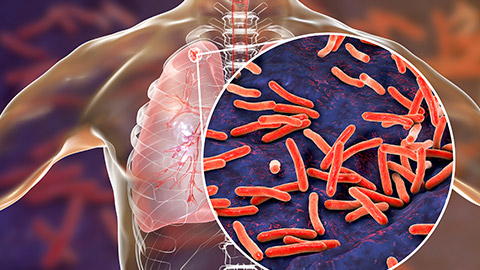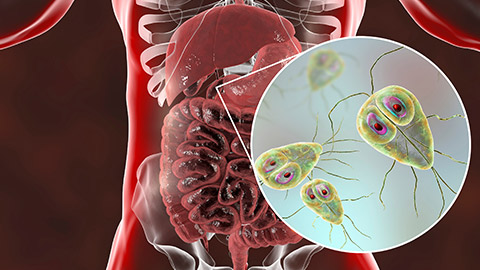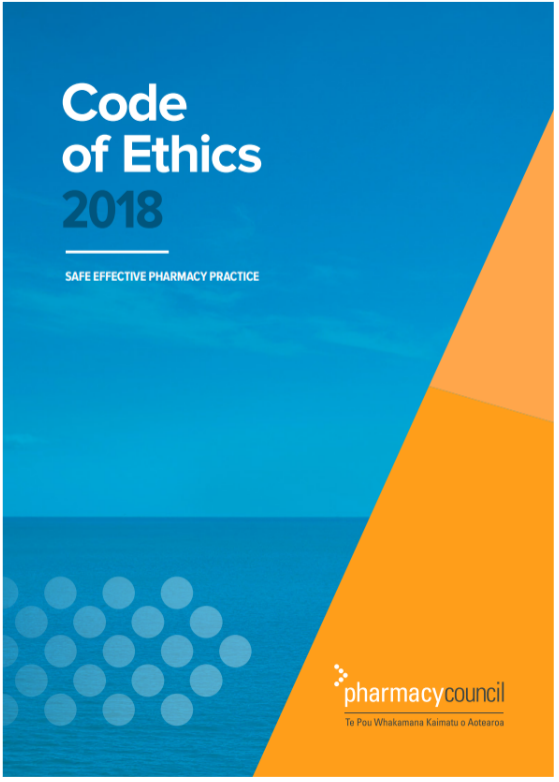Kia ora, and welcome to this week's learning.
Over the next few sessions, we will focus on ethical and professional conduct as a pharmacy technician. We revisit what you already know and discuss the importance of monitoring your own ethical conduct in relation to the Code of Ethics.
Ethical and professional conduct includes having the knowledge and skills to provide pharmacy technician services to Māori in accordance with Te Tiriti o Waitangi principles. Therefore, we will spend time expanding your knowledge of Te Tiriti o Waitangi principles and their practical application in your daily interactions with customers.
Ethics and professionalism
There are various ethical considerations involved in being a pharmacy technician, and those underpin crucial professional expectations and principles. The activities below give you a chance to reflect on your own perspective. Start by considering how your ethics impact your behaviour, choices, and decisions. Later, we will apply that to your work as a pharmacy technician.
Considering and developing your sense of ethics and professionalism
Note:
As your learning journey progresses, we expect you to take the lead with your learning. This means creating your own portfolio of resources and learning materials. A great way to easily help with this is by using the Document tool activity. You really get out what you put in, so we encourage you to download and save these resources in an easily locatable folder on your computer. And, if you're uncertain about your answers or want help completing the activities, we encourage you to use the learning community around you - your peers and tutors are great support.
Watch: What is Ethics? (4:55 minutes)
-
Now that you have reflected on your own ethics watch this video about what ethics is and how to use it as a tool for making good decisions.
-
Professional Ethics Importance: After you watch the video, download and read this article that notes the general key values that professional ethics are based on.
As you watch and read, consider how you apply personal and professional values in your everyday life.
Compare your own reflections with what you have learned from the video and article. In what ways are they similar or different?As we have seen, personal ethics play a crucial role in shaping our everyday behaviour and how we live our lives. These ethics come from many sources and life experiences, evolving and adapting over time. On the other hand — professional ethics, which serve as a guide for our behaviour in the workplace — come from the laws, standards, and expectations of the profession we belong to.
Often, our personal and professional ethics mirror each other. For example, the personal values of integrity, honesty, empathy, and respect shape our interactions with friends and family and are also the foundation of ethical behaviour in our workplaces. A strong alignment with our personal ethics is often a factor that draws us towards a specific profession.
Journal post
Ethics and values in the pharmacy field
Apply your reflections from these general considerations to the pharmacy technician's role. Take a moment to think about the ethics and values important in the pharmacy field.
- Consider whether your own personal ethics are similar to those of the pharmacy industry. If they are, think about how they match up. If they aren't, think about why this might be.
- Write a few sentences in your journal about this. You could also give an example of a value that matters to you personally and in pharmacy.
Why do we need ethics in pharmacy?
Having revisited our understanding of personal and professional ethics (the 'what'), let's now shift our attention to the 'why.' Why do professional ethics exist? What is their underlying purpose? And why are the ethics of a profession formally outlined and recorded within a Code of Ethics?
You probably know the answers already, but it is worth taking a few seconds to think about this before clicking on the (+) symbol or labels to reveal the suggested answers. You might surprise yourself with how many answers you come up with!
The purpose of professional ethics
Professional ethics provide clear guidance and standards for behaviour within a specific profession.
A basis for making decisions, particularly in situations of conflict.
They ensure the welfare and well-being of the public by promoting safe and effective practices and guiding the conduct expected from professionals.
Ethics build trust between professionals and the public, enhancing the reputation of the profession.
They promote consistent and reliable practices across the profession.
Ethics uphold the integrity and values of the profession, reflecting its commitment to ethical conduct.
Ethical codes often align with legal requirements, helping professionals navigate legal requirements.
Ethics hold professionals accountable for their actions, fostering responsibility. Ethics also act as a framework to judge breaches of conduct.
They contribute to the delivery of high-quality services by emphasising best practices.
Ethics shape the professional identity of practitioners, setting them apart as experts who adhere to ethical principles.
They encourage ongoing learning and improvement in professional practice.
Professional ethics promote cultural competence by emphasising the importance of respecting diverse backgrounds, beliefs, and values.
Kei runga noa atu! Outstanding work!
Shortly, we will be diving into the Pharmacy Council Code of Ethics, but before we do, let's consider what the consequences could be if a pharmacy technician did not work ethically and professionally.
Journal post
professional conduct scenario
Read the following scenario and use your journal to answer the questions below.
Sarah, a pharmacy technician, was having a busy day at the pharmacy. A customer, Lisa, approached the counter with a prescription for her essential medication. Lisa was visibly anxious due to her medical condition and sought reassurance about the medication's dosage.
Sarah was feeling stressed and rushed. She didn't greet Lisa warmly and seemed impatient while listening to her concerns. Instead of addressing Lisa's worries, Sarah brushed off her questions without providing adequate information. Sarah's tone was sharp, and she failed to establish a connection with Lisa.
Feeling dismissed and unsupported, Lisa left the pharmacy feeling more anxious than when she arrived. She was unsure about how to take her medication correctly and was left to figure it out on her own.
In a new journal post, answer these questions about Sarah and Lisa:
- What was it about Sarah's behaviour towards Lisa that was not professional?
- What was the outcome for Lisa of her interaction with Sarah?
- Other than what we know from the scenario, what other outcomes could result from this interaction?
- Considering Lisa's health and well-being over the coming days, what might Lisa say to her friends and family about her visit to the pharmacy?
Pharmacy council code of ethics 2018
It's time to dive into the Pharmacy Council Code of Ethics.
|
Pharmacy Council Code of Ethics. If you don't already have it downloaded, click the link above to save it for your use. As a pharmacy technician, you are expected to know, understand, and apply the fundamental values of the pharmacy profession that are expressed in the Code of Ethics. |
Let's become more familiar with the Code. Using the Code of Ethics to provide the answers, complete the following fill-in-the-blanks activity to help you learn.
As you will see in the Code, seven principles are divided into three groups under the three professional values of care, integrity, and competence. In level three, you looked at what these words mean and examples of these values in action. Now that you have developed your knowledge and skills and have been in the pharmacy workplace longer, let's revisit our understanding with the following activity.
Self-directed learning activity
In this activity, you will need to think about times in work placement when you saw others working ethically and professionally.
- Choose one of these professional values:
- Care
- Integrity
- Competence
- For the value you have chosen, describe a situation where you observed the value being put into practice. Use the prompts below to create a complete picture of the incident.
- Describe:
- who was involved
- don't use real names. Refer to people by their roles, such as the 'customer', the 'staff member', the 'pharmacy technician', etc.
- the situation
- the actions and behaviours that demonstrated the value
- the result or outcome of the situation
- what you learned from your observation.
- Describe:
- Write a short piece to share with your fellow ākonga (students) on the forum: SDL: Values In Action.
- Read your peers' responses. By sharing your experiences with each other, we enhance everyone's learning — sharing is caring!
And that's a wrap! Congratulations, you've completed another week of Professional Practice.

Reconstitution of medicines
Nau mai, welcome to the last session on the topic of reconstitution of medicines.
As a pharmacy technician, you are expected to have the knowledge and skills to carry out the appropriate practices, procedures, and responses for all dispensing procedures, including those related to the reconstitution of medicines. At this stage in your programme, you have explored the topic of dispensing and reconstitution of medicines. Therefore, in this session, we consolidate your understanding of the topic by looking at dispensing and reconstitution-related questions and scenarios.
Activity - What would you do?
How confident are you with your reconstitution knowledge and practices? These next activities give you the opportunity to reflect on your learning so far and apply your knowledge and skills.
Bio Break
Time for a brain/body break before you move into your next learning activity.
Take 2-3 minutes to do any one of the activities below or a brain/body break of your own choice.
- If you feel like something high energy and a little silly, join in "The Wiggle Dance"- dancing is not just for children!
- If you are keen on a simple stretch routine for your neck, shoulders, legs, back and sides, join Yarra Leisure. This is great if you have been sitting at a desk for an extended period of time.
- If mindful breathing is more your style, then join Meditation 4 Self Help. This is good for creating a bit of calm in a busy day.
Ka mutu pea, that's great. Hopefully, you're feeling refreshed and ready to get back into it!
Activity - What would you do?
Once again, use this activity to reflect on your ideas, apply your learning and save your work to use as a resource later (bonus!).
Self-directed learning activities
So far, we have been exploring the knowledge and skills required of a pharmacy technician in relation to dispensing in a pharmacy workplace. You have focused on:
- preparing and implementing prescriptions for dispensing using the appropriate practices and procedures.
- using the dispensary software
- dispensing pharmaceutical orders
- the reconstitution of medicines.
While there is still more to explore in the realm of dispensing as a pharmacy technician, this is an ideal moment to revisit, review and refresh your learning.
The following are suggestions on how you might do this.
- Re-read or skim through all of the previous online content for a reminder and refresher.
- Review your notes and add to them.
- Reflect on the responsibilities, knowledge and skills required of a pharmacy technician when dispensing.
- Can you describe the dispensing processes?
- Can you explain the scope and limitations of a pharmacy technician's role in dispensing?
- Can you apply your knowledge to dispensing in the workplace setting in a safe manner and to the required standards?
- Consider whether you have any remaining questions regarding this topic. If you do, use your available resources to seek out the answers. Remember that people can also serve as valuable resources, so engage in discussions with your peers, tutor, and pharmacy colleagues to enhance your understanding.
And that's another week of Introduction to Dispensing complete, ka pai.

Pathogens and treatments
Nau mai hoki mai, welcome back to our final session on the subject of pathogens.
During this session, we will continue to explore the various conditions that you, as a pharmacy technician, might encounter in your daily responsibilities. We will discuss the pathogens that cause these conditions and look into the anti-infective agents used in their treatment.
As we move through this session, we recommend you take your own notes in your preferred way. Not only will it help you learn, but you will be making useful resources for future reference.
Bacterial Pathogens
Let's start by looking at the infectious disease Tuberculosis (TB).
tuberculosis
TB most commonly affects the lungs. It is transmitted from person to person via droplets from the throat and lungs of people with the active respiratory disease.
Rangahau (research) to find out the name of the bacteria that causes TB and add this information to your notes.
In healthy people, infection with tuberculosis often causes no symptoms since the person's immune system acts to "wall off" the bacteria.
Watch: CDC Tuberculosis (TB) Transmission and Pathogenesis Video (1:42 minutes)
Watch the following video that shows the transmission and pathogenesis (development of disease) of TB in the body.
Note the use of the word 'latent' — a term we have come across before when discussing the Herpes Simplex Virus.
What did you already know, and what did you learn? Make sure to capture any new information in your notes.
This is an illustration of secondary (reactivated) TB after a period of latency:

In New Zealand, there are approximately 300 cases of TB diagnosed each year. While life-threatening complications such as haemorrhage from the lungs are now rare, TB can still be a very serious disease, particularly for older people.
Activity
Forms of tuberculosis
Once again, it's time for some research! Research and make notes of the signs and symptoms of these two forms of TB:
| Primary TB | When a person is initially exposed to the tuberculosis bacteria and becomes infected for the first time. |
| Secondary TB | When a latent TB infection becomes active. |
The rates of TB are very low in Aotearoa New Zealand. Therefore, vaccination against TB is only recommended for children less than five years of age who are at higher risk of developing the disease.
Risks are:
- Living in a house or family/whānau with a person with either current TB or a history of TB.
- One or both parents, household members or carers who, within the past five years, have lived for a period of six months or longer in countries with a high TB rate.
- Living for three months or longer in a country with a high TB rate. Therefore, they are more likely to be exposed to those with TB.
Activity
tuberculosis - key points
Read about tuberculosis on the Healthify website and make notes on the following key points about TB:
- How TB is diagnosed
- How TB is treated
- Patient care advice on self-care
Viral pathogens
Covid-19 is an illness you will know a lot about. As a pharmacy technician, you will provide advice and services for managing this illness.
Covid-19 (mate korona)
Let's recap what we know:
Coronavirus Disease 2019 (COVID-19 /mate korona in te reo Māori) is the illness caused by the virus SARS-CoV-2. "COVID-19" was named by the World Health Organization (WHO) to describe the specific disease caused by the novel coronavirus that emerged in 2019. "Corona" is often used as a shortened form of "coronavirus," which is the broader family of viruses to which SARS-CoV-2 belongs. "Corona" refers to the crown-like spikes on the surface of the virus when viewed under a microscope.
Take a look at this illustration of SARS-CoV-2 binding to receptors on a human cell in the initial stage of the Covid-19 infection.

As listed on the Unite Against Covid-19 website, the common symptoms can include one or more of the following:
- a new or worsening cough
- sneezing and runny nose
- a fever
- temporary loss of smell or altered sense of taste
- sore throat
- shortness of breath
- fatigue/feeling of tiredness.
Less common symptoms may include:
- diarrhoea
- headache
- muscle pain or body aches
- nausea
- vomiting
- malaise — a general feeling of discomfort, illness, or unease
- chest pain
- abdominal pain
- joint pain
- confusion or irritability.
Prevention strategies to protect against infection include:
- getting vaccinated
- wearing a face covering
- using basic hygiene:
- regularly washing and drying hands, using hand sanitiser
- coughing or sneezing into a disposable tissue or your elbow
- cleaning frequently touched surfaces
- practising physical distancing in public when possible
- staying at home when feeling sick
Activity
Covid-19 - key points
Read about Antiviral medicines for COVID-19 infection on Healthify and make your own notes about the treatment of Covid-19 with antiviral medications.
Fungal pathogens
Oral thrush is caused by a fungal pathogen. It is a health condition that you will come across in your work in a pharmacy.
Activity
Oral thrush
Do some research to find out the answers to the following questions, and record your answers in your own notes for reference later.
- What are the causes of oral thrush?
- Name the fungi and the factors that make a person more susceptible to developing this condition.
- What are the signs and symptoms?
- How is it treated?
- Describe the recommended medicines and self-care measures.
This is an illustration of candida albican, responsible for oral and genital thrush:

Parasitic Pathogens
Giardia infection is common in New Zealand. It is a gastro-intestinal illness caused by a parasite.
Activity
Giardia
To learn more about this illness, read the page about Giardia on Healthify, noting:
- the signs and symptoms
- how it is contracted and spread
- how it can be prevented
- how it is treated
This is an illustration of Giardia in the gastrointestinal tract:

Whakamihi! Well done on completing this section on pathogens.
Check your understanding of today's session by answering the following pātai (questions). The pātai have been divided into four sections - tuberculosis, Covid-19, oral thrush and giardia. Good luck!
Self-directed learning activities
Activity 1:
Have you heard of the medicine Oseltamivir? Perhaps you have heard of its trade name — Tamiflu? It is a medicine used in the treatment of a common illness caused by a pathogen. In this self-directed learning activity, find out the following information about this medicine and record the information in your journal.
Answer these questions:
- What therapeutic group does Tamiflu belong to?
- What dose form does it come in?
- What is it used to treat?
- Can it be used prophylactically (as prevention)?
- Is it a replacement for vaccination?
- Is it a funded medication, or do patients pay the full cost?
- What are the possible side effects of Tamiflu?
Activity 2:
Frankie comes into your pharmacy and says he has just finished a course of antibiotics. His husband has suggested he take probiotics. He asks you to explain what probiotics are, how they work, and what they are used for.
In your journal, answer Frankie's questions (50-80 words).
Tino kino te pai — Great work! You have completed another week of study.

